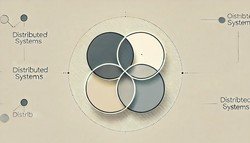Exokernel

(Representational Image | Source: Dall-E)
Quick Navigation:
- Exokernel Definition
- Exokernel Explained Easy
- Exokernel Origin
- Exokernel Etymology
- Exokernel Usage Trends
- Exokernel Usage
- Exokernel Examples in Context
- Exokernel FAQ
- Exokernel Related Words
Exokernel Definition
An Exokernel is a type of operating system architecture that provides minimal abstractions and gives applications direct access to hardware resources. Unlike monolithic kernels or microkernels, Exokernels enforce security and resource allocation policies but do not abstract hardware functionalities. This allows applications to interact with hardware more efficiently, leading to better performance and flexibility.
Exokernel Explained Easy
Imagine a library where instead of borrowing a book, you get direct access to the entire storage room and can pick out books yourself. A regular library system (like a normal operating system) decides how books should be organized and accessed, but in an Exokernel system, you decide everything. It gives you the freedom to organize and read in your own way, which makes things faster but also requires more knowledge about how books (or in this case, the computer’s hardware) work.
Exokernel Origin
The concept of Exokernel was introduced in the mid-1990s by researchers at MIT. They aimed to design an operating system that reduced kernel intervention, allowing applications to control system resources more efficiently. The idea emerged as a response to the increasing overhead of traditional operating systems.
Exokernel Etymology
The term Exokernel comes from "exo-" meaning "outside" or "external" and "kernel," which refers to the core component of an operating system. This reflects the fact that Exokernels provide a minimal core while exposing most of the system's hardware directly to applications.
Exokernel Usage Trends
Exokernel-based designs have remained mostly experimental, with some implementations influencing research in operating system architecture. While mainstream OS designs favor microkernel and monolithic approaches, Exokernel principles have inspired modern virtualization and lightweight containerized environments.
Exokernel Usage
- Formal/Technical Tagging:
- Operating System Design
- Resource Management
- Low-Level Kernel Architecture - Typical Collocations:
- "Exokernel architecture"
- "Application-level resource management"
- "Minimalist kernel design"
- "Direct hardware access in Exokernels"
Exokernel Examples in Context
- Researchers at MIT developed an Exokernel-based OS to test direct hardware access performance improvements.
- Some hypervisor technologies borrow ideas from Exokernel designs to minimize overhead in virtualization.
- Exokernel concepts have influenced embedded systems where low latency is crucial.
Exokernel FAQ
- What is an Exokernel?
An Exokernel is a minimal operating system architecture that provides direct hardware access while enforcing security policies. - How does Exokernel differ from Microkernel?
Microkernels abstract system resources but keep only essential functions in the kernel, while Exokernels avoid abstractions and expose hardware directly. - What are the advantages of Exokernel?
Exokernels offer high performance, flexibility, and efficient resource usage since applications can manage resources directly. - What are the disadvantages of Exokernel?
They require more complex application development, as programmers must handle low-level resource management manually. - Where are Exokernels used?
They are primarily used in research and experimental operating system designs. Some modern virtualization tools borrow concepts from Exokernel architecture. - How does Exokernel improve system performance?
By minimizing kernel intervention and allowing direct hardware access, it reduces system overhead and increases efficiency. - Are there real-world implementations of Exokernel?
Yes, research projects like MIT's ExOS were developed as Exokernel-based operating systems. - Why didn’t Exokernels become mainstream?
Complexity in application development and lack of general-purpose usability limited their adoption in consumer and enterprise environments. - How does Exokernel handle security?
It enforces access control policies while still allowing direct hardware interactions. - Can Exokernels work with modern hardware?
Yes, but they require customized drivers and resource management tailored to the specific hardware.
Exokernel Related Words
- Categories/Topics:
- Operating Systems
- Kernel Architecture
- Computer Science Research
Did you know?
Exokernel research led to breakthroughs in understanding efficient OS designs, influencing lightweight virtualization and cloud computing technologies. While Exokernels never became mainstream, their concepts live on in modern computing.
Authors | Arjun Vishnu | @ArjunAndVishnu

PicDictionary.com is an online dictionary in pictures. If you have questions or suggestions, please reach out to us on WhatsApp or Twitter.
I am Vishnu. I like AI, Linux, Single Board Computers, and Cloud Computing. I create the web & video content, and I also write for popular websites.
My younger brother, Arjun handles image & video editing. Together, we run a YouTube Channel that's focused on reviewing gadgets and explaining technology.
















Comments (0)
Comments powered by CComment